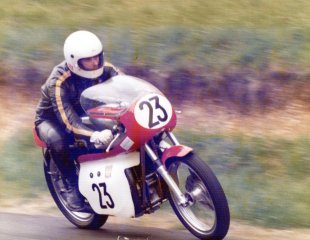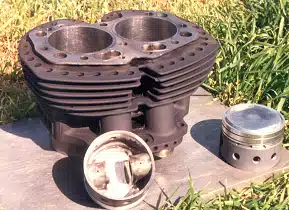Yes, that's the question I was asking... thank you. What change in the engine do you expect from that?
I will answer the question perhaps a little obliquely, but it's probably fair to say my reasons for going short stroke didn't fit your question!

I raced a Rickman chassis with an 850 sourced from ex factory parts in the '70s. I have described this engine earlier, basically a 750 short stroke with an 89mm crank. I sold it in 1980.
In 2009 I was able to buy the frame for a second time. It had had a hard life and needed repair. The engine removed from it before I bought it was a 1007 long stroke. After repair, I wanted to race it, but also give it as easy a life as possible. Available race classes in the UK at the time were 1300 twins and F750, with the prospect of F750 racing if I rode in Europe.
After thinking about it for a while, and recognising that the cost of building a race engine from scratch doesn't vary too much from 750 to 1007, I reasoned that smaller shocks at higher frequency were likely to be less damaging than larger shocks at lower frequency!
Anyway, I selected 750 as the capacity likely to give me most racing opportunities, and indeed in the first season raced it in two classes at each race meeting I rode when I only took one bike.
Having decided on the 750 capacity, I contacted Steve Maney to purchase a set of cases. The prospect of an actual 750 short stroke appealed emotionally due to the history of the bike I ran in the '70s, so I enquired about the prospect of a crank.
When I spoke to Steve he had one short stroke (80.4) crank on the shelf and told me he made cranks in batches, with no further batches of any stroke due for manufacture. So I bought that.
I 'expected' to sacrifice some power in the mid range and gain some rpm at the top. I didn't expect much difference in max power.
In reality, as a rider and it being 25 years between riding the 2 engines, I can't make a direct comparison. But, definitely more rpm, probably less power at 4000rpm, good power at 7000rpm.
I love this engine, but I loved the one I had in the 1970s too.


